Fox Glacier (Te Moeka o Tuawe in Maori)Fox Glacier is one of two of the best known glaciers of New Zealand, descending from
the Main Divide at over 3000 m above sea level down to the temperate rain forest that
graces the West Coast region of South Island. Like Franz Josef Glacier, its snout lies
within easy reach of the main road, Highway 6 (more below photos).
It is 35 km2 in area with an estimated mean depth approaching 100 metres. Positive mass
balances (from increased snowfall) since the mid-1980s have resulted in several hundred
metres of advance, except for brief recession at the turn of the century. Like Franz Josef
Glacier the Fox responds rapidly to mass balance changes because of its wide accumulation area
and steep narrow tongue.
|
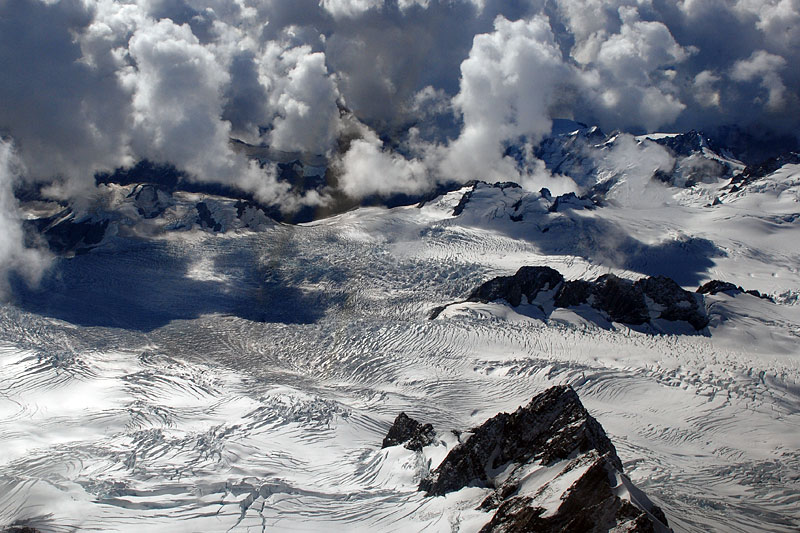 The broad, heavily crevassed accumulation basin of the Fox Glacier (April 2008).
Rock islands (“nunataks”) project through the ice. Crevasses indicate the fast-flowing nature of the glacier
over an uneven bed. | 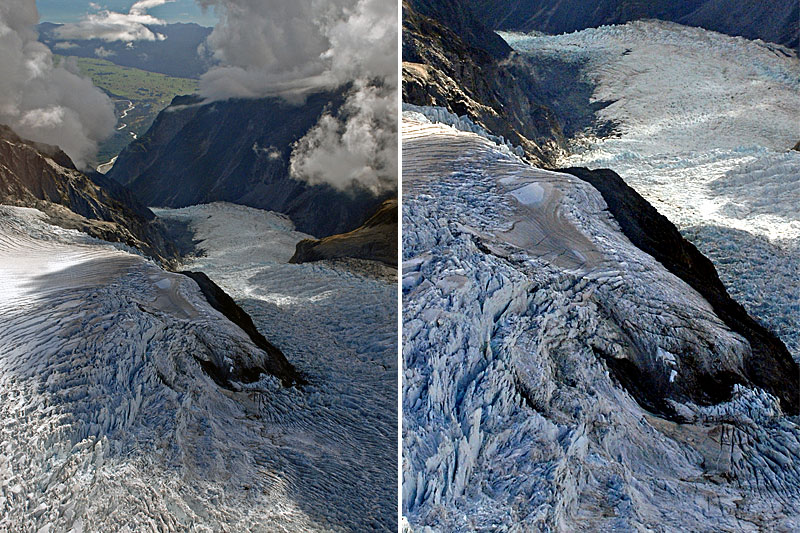 Looking straight down the tongue (April 2008), from the edge of the accumulation
basin where converging flow and intense crevassing are strongly in evidence. Rain forest, pastures and the coast
are in the background. | 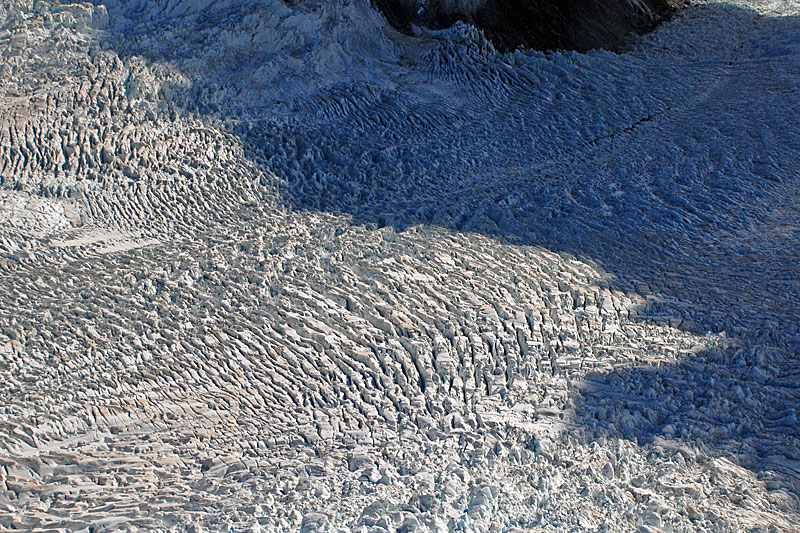 A maze of crevasses and séracs in upper Fox Glacier (April 2008) as the ice approaches
the top of the first icefall towards the left. Not the prominent converging lines (flow unit boundaries where different
streams of ice combine). | 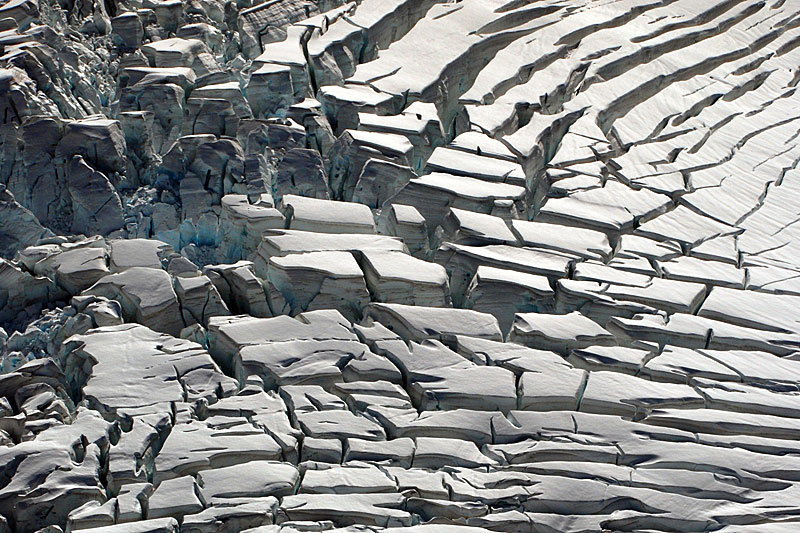 Intersecting crevasses in the accumulation area (April 2008), reflecting uneven bed topography.
Some inter-crevasse blocks are covered by new snow and reveal the stratification of firn in the crevasse walls. |
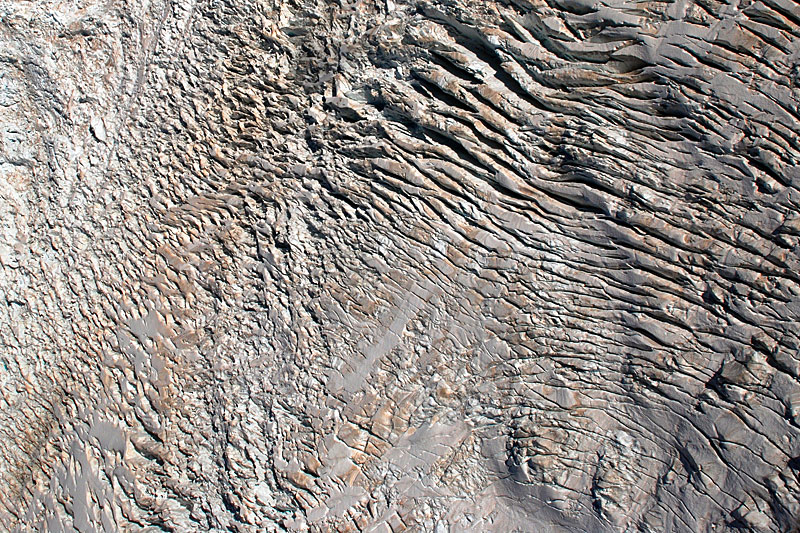 Closure of the main set of transverse crevasses as the ice moves into a zone of
compression. The flow is from top to. The traces of closed crevasses can be seen mid-right (April 2008). | 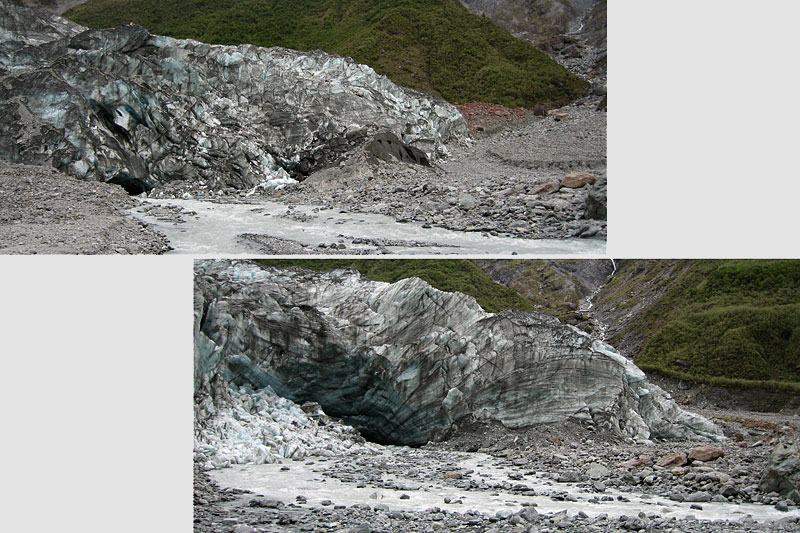 Above: Advancing snout in March 2006. To the right, against the far hillside, an
area of orange lichen-covered moraine is visible. This is the trimline of the late 1990s advance. Below: mid-April 2007,
the trimline is no longer visible due to the new advance. | 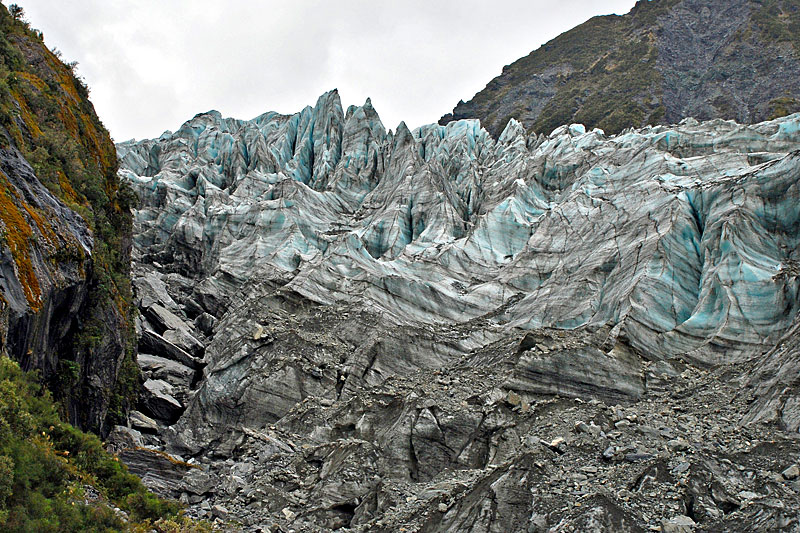 Margin of Fox Glacier near the snout in early April 2008, illustrating ice-marginal
channel with huge boulders, a layered structure with debris zones interpreted as thrusts. | 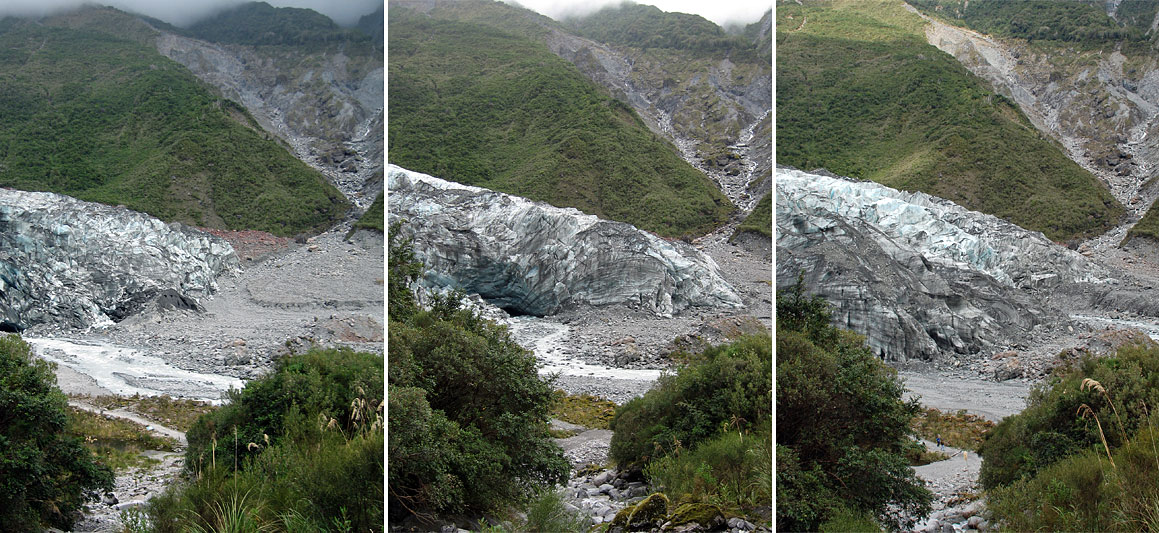 Snout in 2006 (left), 2007 and 2008 (right), as the glacier advanced. Note the active gully
in the background and the boulders in a debris fan in the foreground. |
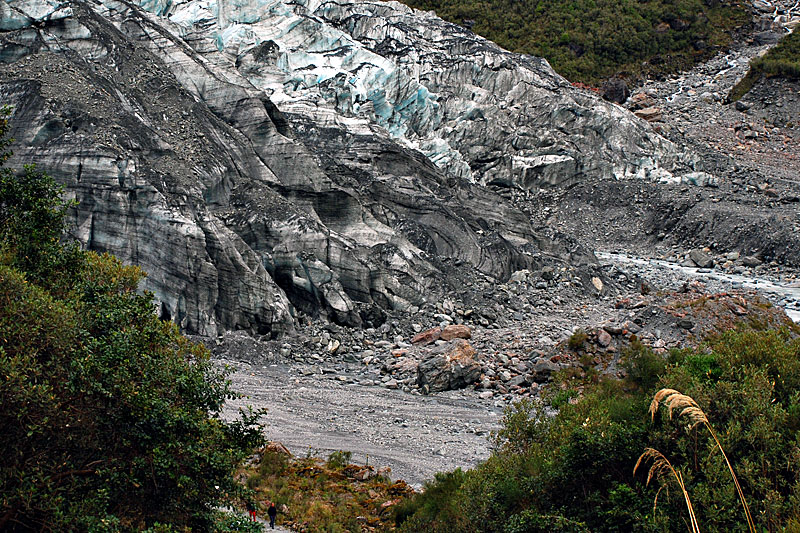 Telephoto of the snout from the same position as the previous image [12], with details of
the thrust structures and a push moraine adjacent to the snout. | 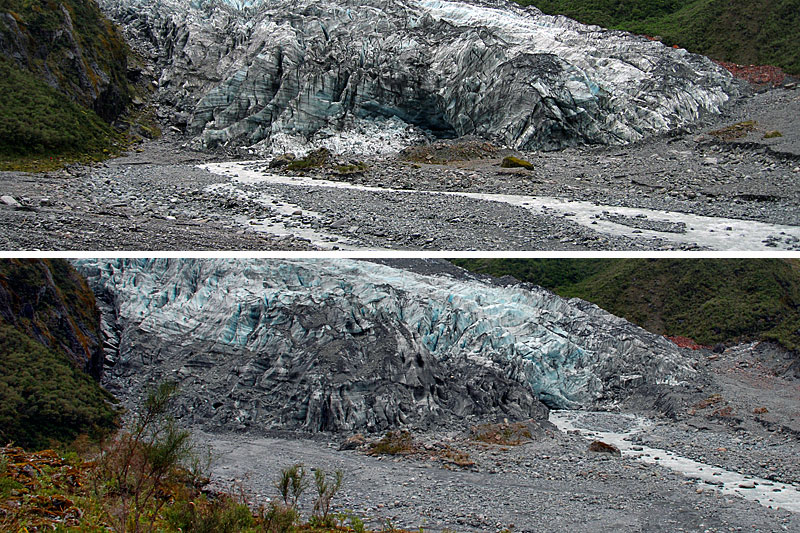 Changes in the subglacial hydrology of Fox Glacier are evident in these images from 2007
(top) and 2008: the outlet stream has switched sides at the snout from the true right side of the valley to the true left. | 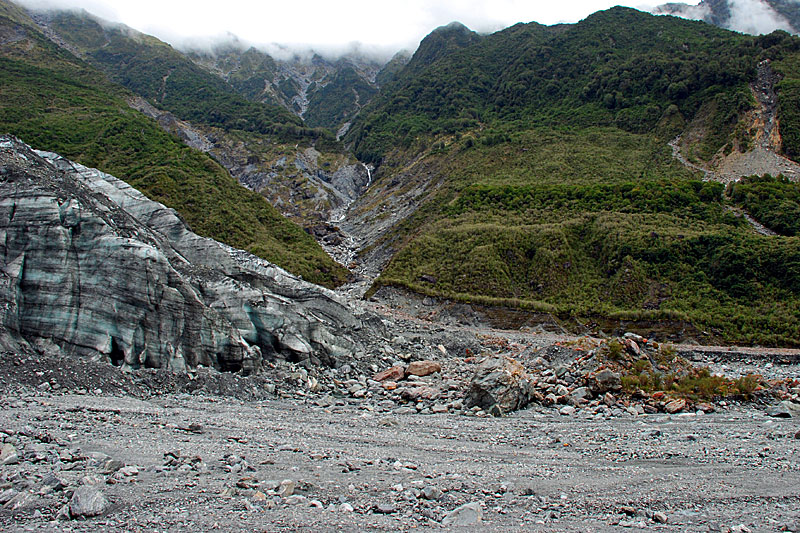 Close-up view of the push moraine in early April 2008. Although the glacier has advanced
strongly in the past few years, the long warm dry summer of 2007/2008 resulted in temporary recession of the snout of a few
metres. | 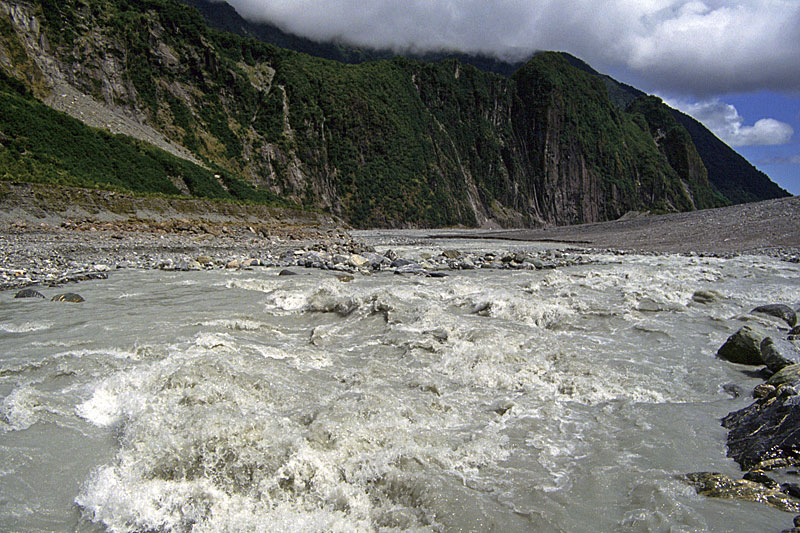 Looking downstream from near the snout in 1992. Following heavy rain, discharge from the
glacier responds quickly. There is considerable bed load (rumbling boulders) and suspended sediment (grey colour of the water).
The river channel constantly changes course, preventing colonisation of the plain by plants. |
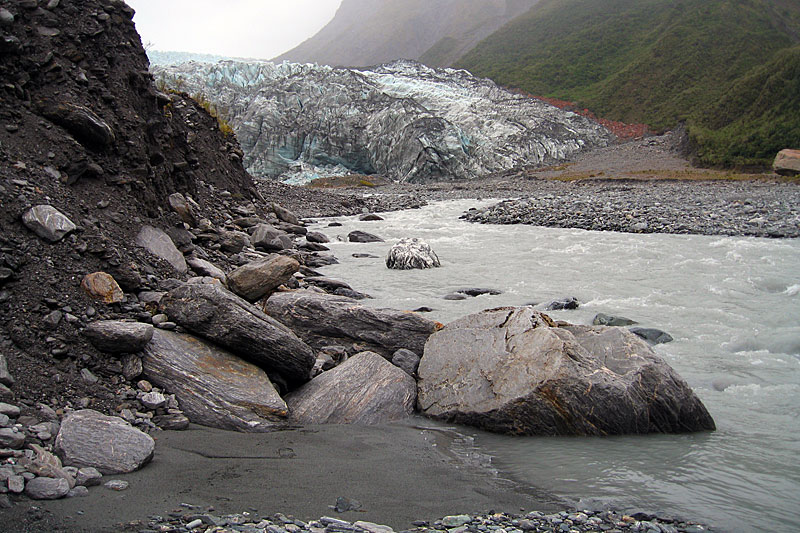 The toe of a debris fan near Fox Glacier in April 2007. The river has cut a near vertical
cliff of unconsolidated debris several metres high from which large boulders are falling out. | 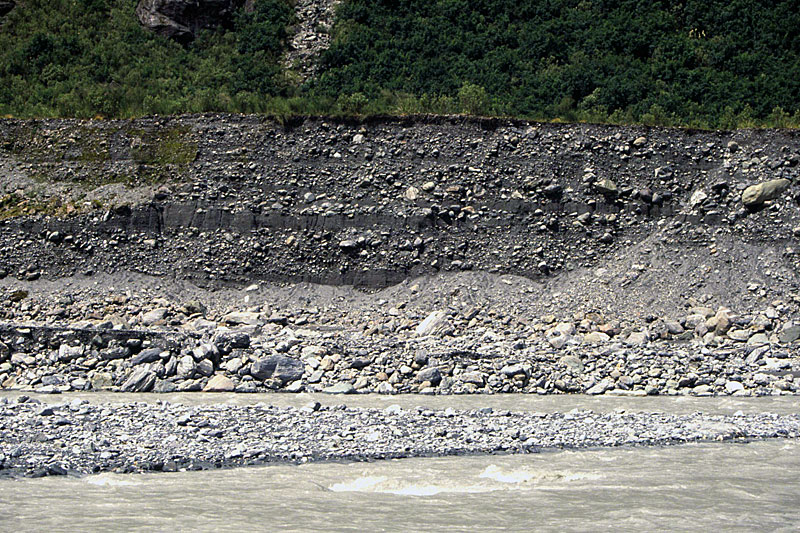 Glaciofluvial sediment exposed by river erosion on the true right flank of the Fox valley.
The section is several metres high and shows several phases of deposition. Flow is towards the right. The stones are imbricated,
i.e. stacked against each other and thus preferentially tilted up valley by river flow. | 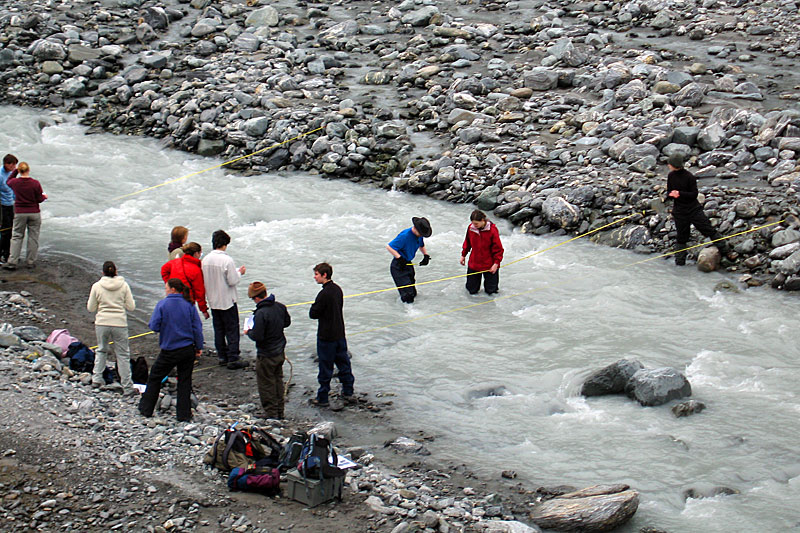 Aberystwyth University students being taught how to measure discharge of one of the braided channels
of the Fox Glacier river. | 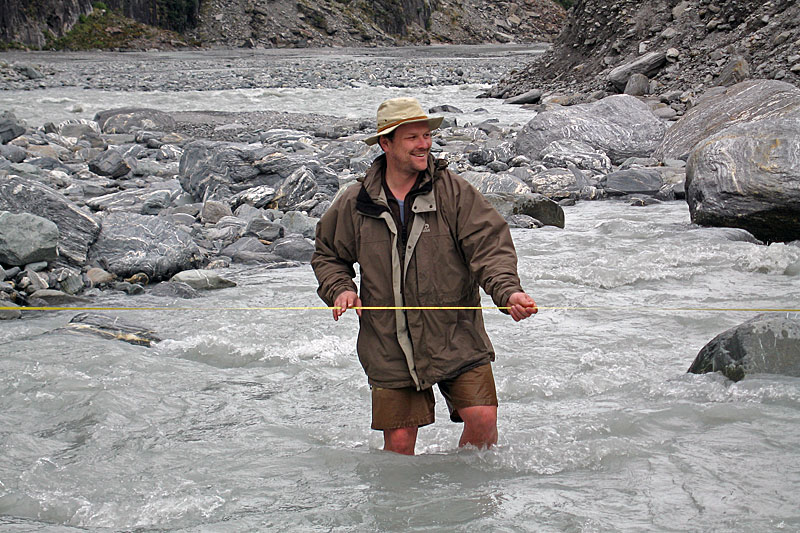 Dr Bryn Hubbard of Aberystwyth University setting up a tape measure from which to measure stream depth
and velocity of the Fox Glacier river. The water temperature is near freezing, but glaciologists are relatively immune from the cold! |
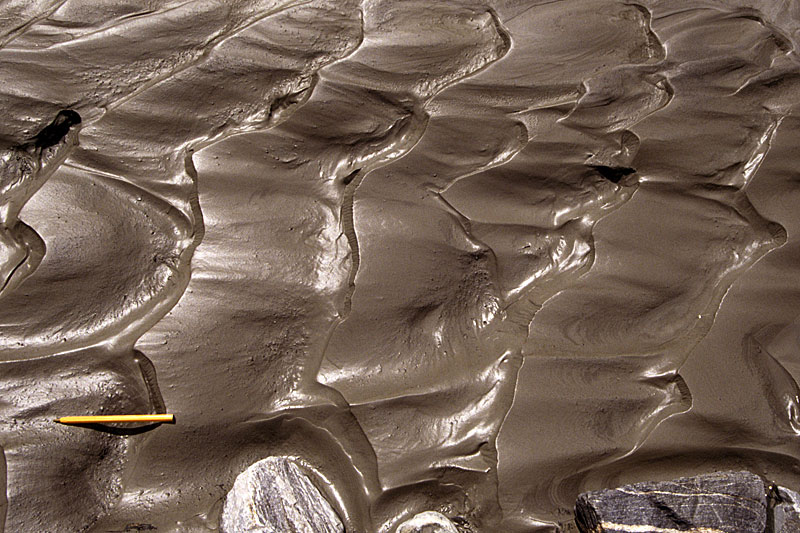 Despite the turbulence of flow of the Fox Glacier river, in periods of waning flow fine-grained sediments,
such as this silt and sand are deposited. Current ripples in this photograph indicate that flow was from right to left. | 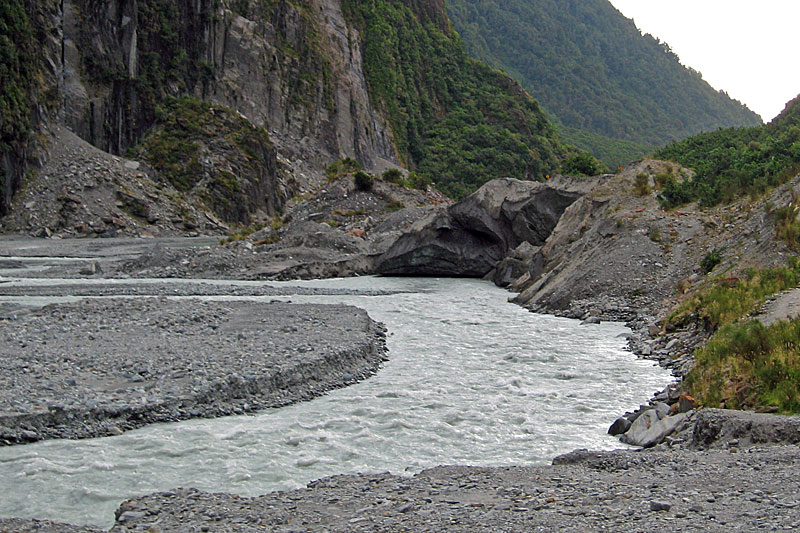 A prominent tree-covered, ice-cored moraine from the 1920s used to cross the valley near the
present-day car park. A combination of exposure of the surface to ablation by humans and undercutting by the river has resulted in
rapid degradation of the moraine in the last two decade and little now remains (2006). | 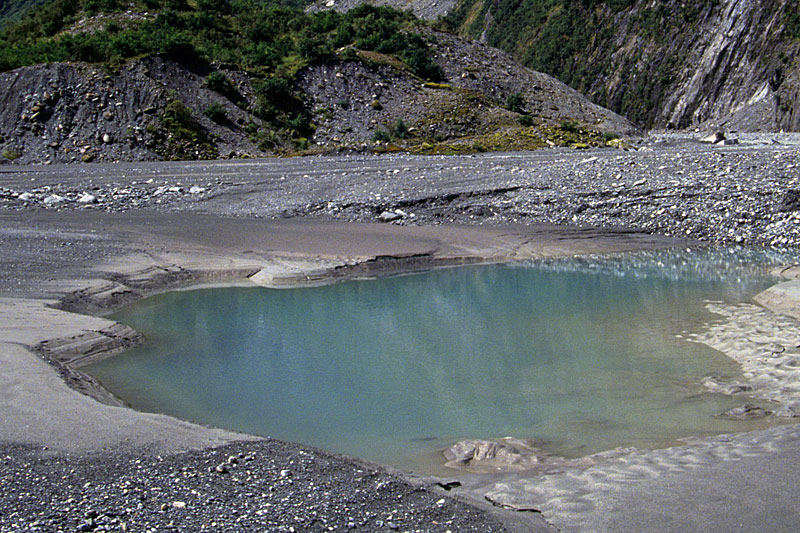 Kettle hole filled with water carrying suspended sediment (hence the green colour) on the braid plain
of Fox River in 1992. Buried ice from the now disappearing 1920s moraine has melted, resulting in this steep-sided depression. From one year
to the next these features fill up with sediment and new ones form. | 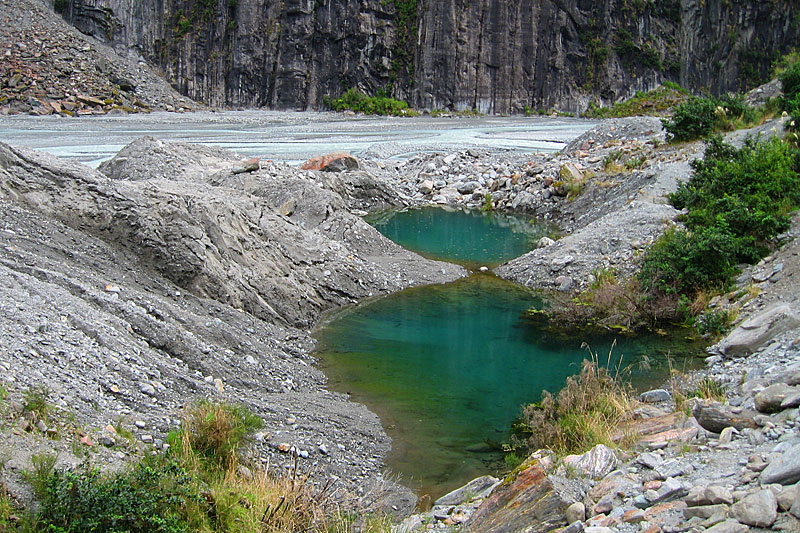 Newly formed kettle hole in the remnant of the 1920s moraine, taken in 2006. The surrounding collapsing slopes
of loose debris are underlain by stagnant glacier ice, exposure of which destabilised the originally well established wood on the moraine. |
| Photos Michael Hambrey |